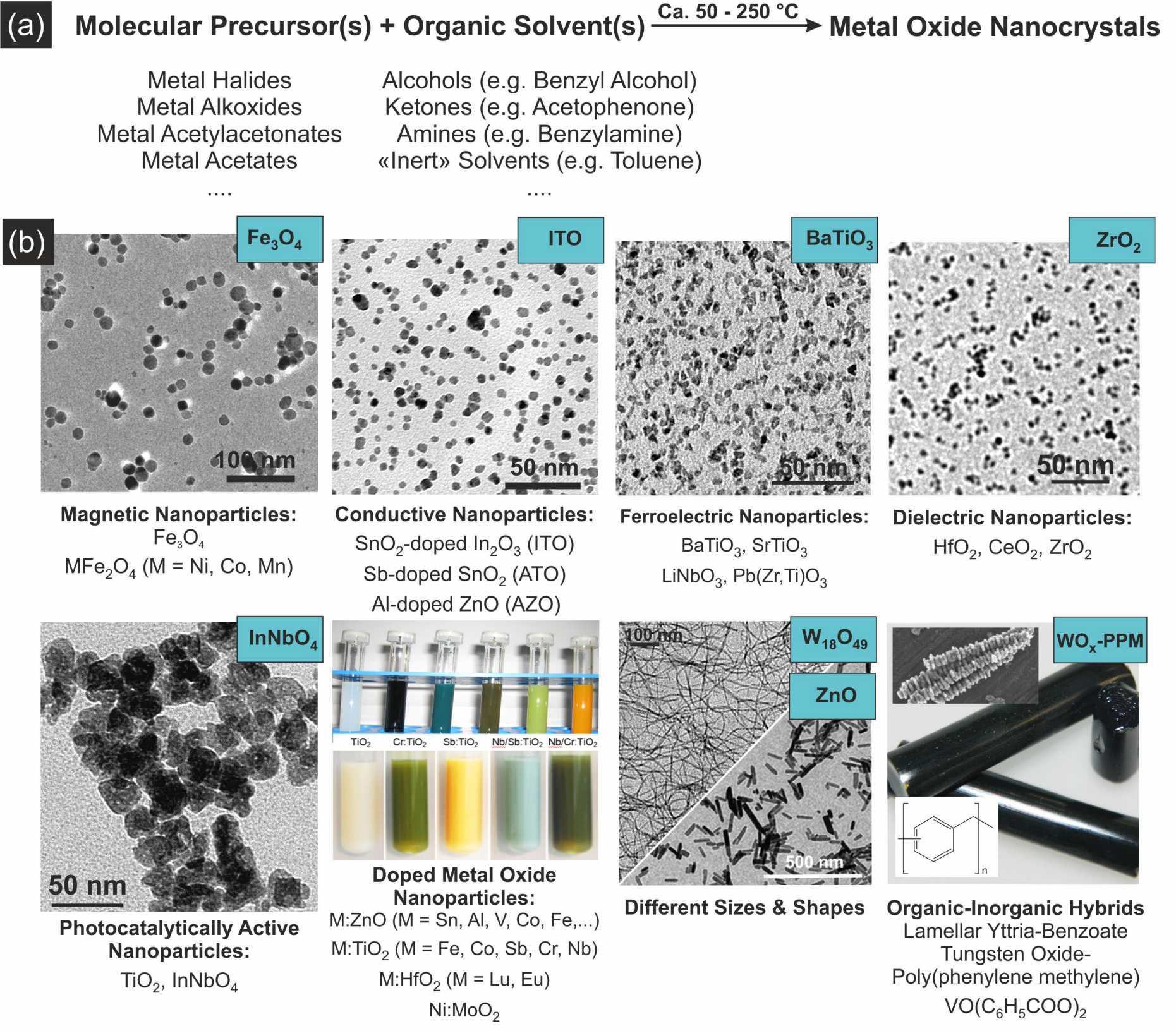(Nano-) Particle Synthesis and Processing
The Laboratory for Multifunctional Materials has broad expertise in the wet-chemical synthesis of functional materials ranging from metal oxide and noble metal nanoparticles to lithium metal phosphates and bulk copper. In particular, we have pioneered the nonaqueous sol-gel synthesis of metal oxide nanoparticles, giving access to a wide range of compositions, sizes, shapes and thus properties that include magnetic, ferroelectric, dielectric, conductive or photocatalytically active nanoparticles. Nonaqueous sol–gel routes are based on the reaction of molecular precursors like metal halides, acetates, acetylacetonates, or alkoxides with organic solvents at temperatures between 50–250 °C (Figure 1a). Figure 1b displays a selection of transmission electron microscopy overview images of metal oxide nanoparticles and metal oxide-based organic-inorganic nanohybrids.

We are also familiar with the further processing of nanoparticles into thin films and porous structures such as aerogels, as well as the embedding of nanoparticles into polymers to produce composite materials. Understanding and controlling the surface chemistry of nanoparticles is critical for these processing steps to be successful. We have the appropriate methods for surface characterization as well as the expertise to prepare colloidal dispersions.